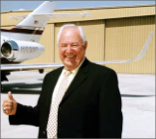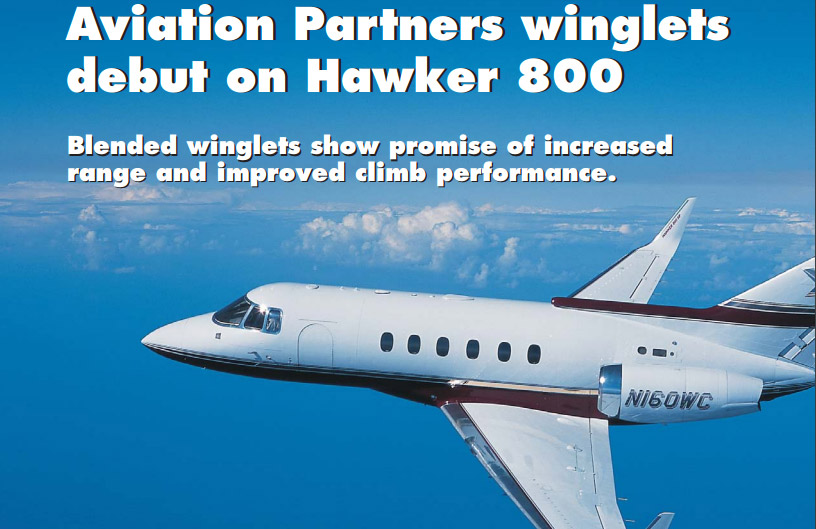
Aviation Partners Winglets Debut on Hawker 800
By Clay Lacy in November 2001 Professional Pilot Magazine
ATP/Helo/CFII Boeing 747, Gulfstream II/III/IV, Hawkers, Learjets, Citations and 25 misc type ratings
Blended winglets for the Hawker 800, anticipated to be certified within 12 months, are the same design concept and application of technology as the winglets you see on the Gulfstream II, the BBJ and the Boeing 737 next generation 700 and 800 series airliners. I’ve operated a blended winglet- equipped Gulfstream IISP for the past 7 yrs and was looking forward to learning more about how this advanced winglet technology would impact Hawker performance and handling characteristics.
PREFLIGHT
For a preflight roundtable discussion, Aviation Partners CEO Joe Clark had flown in from BFI (Boeing Field, Seattle WA) along with Aviation Partners Dir of Flight Test Dick Sears and Aviation Partners Chief Pilot Rick Millson. We sat down to talk about the Hawker 800 and the Aviation Partners blended winglet program before heading out to the ramp.
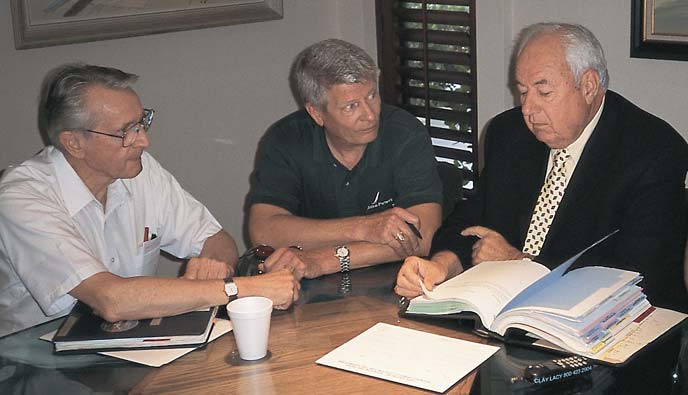
Winglets have been around since the 1950s and they go back to Dr Richard Whitcomb’s work at NASA Langley on aircraft designs during that era. Whitcomb also developed the supercritical wing for transsonic speeds, area rule fueselage and supercritical propeller blade cross sections. The 1st corporate jet to have winglets was a Lear 28. Those early winglets were later incorporated into the Learjet 55.
About 10 years ago, Aviation Partners came up with a revolutionary new winglet concept under the design leadership of Dr Bernie Gratzer, former chief aerodynamicist at Boeing. Gratzer had theories on what would make winglets more effective and he fine-tuned and patented blended winglet technology for the original Aviation Partners Gulfstream II program. While most aircraft are heavily loaded inboard and lightly loaded outboard, the relative wing loading shifts outboard with blended winglets. They take the span loading and make it much more elliptical by bringing it out farther from the fuselage. These winglets increase effective wing area while reducing drag. One distinctive feature of blended winglets is the wide curve transition from wing to winglet. This design takes the vortex completely away from the transition area and reduces overall aerodynamic drag.
GIISP operators, using these winglets, enjoy up to 7% additional range, a 2000-ft higher initial cruise altitude, boosted rates of climb and improved handling characteristics throughout the entire flight envelope.
The rationale for the 800 winglet program, Clark told me, was to do the same for the Hawker 800 series that was done for the Gulfstream IISP. While they are somewhat limited in range, Hawkers have one of the nicest cabins in this class of equipment. Giving the Hawker 800 an anticipated 180 nm additional range, through the aerodynamic benefits of blended winglet technology is probably something that will be worthwhile for many 800 owners. This range boost should transform the 800 into a reliable nonstop coast-to-coast and west- coast-to-Hawaii airplane under most conditions.
Sears was involved with initial flight-testing of the GII winglet system. He participated in the launch of the Hawker 800 program early this year and reports that initial flight tests have proven to be a complete success. Aviation Partners put 20 baseline hrs on the aircraft calibrating onboard test equipment, plus another 20 hrs or so flying with the winglets.
FLYING THE 800 WITH WINGLETS
At our fairly light takeoff weight of 22,400 lbs, we rotated from VNY runway 16R direct to 13,500 ft VFR to MHV (Mojave CA). Climbout was at 220 kts. Elevator forces were light and the 800 seemed to fly off the ground with very little pitch required. Chief Pilot Millson remarked that with blended winglets elevator control pressure during rotation is reduced.
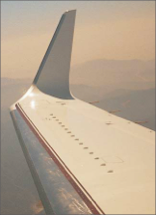
At 13,500 ft for a few minutes, I did 45° and 60° bank turns before bringing the power to idle for descent into MHV. While I’m not a high-time Hawker pilot, the 800 seemed to want to glide, like all airplanes with effective winglet systems. I used speed brakes to increase rate of descent and we set up approach for runway 08 at MHV. Book Vref was 128 kts. For the 1st landing, I cut power to idle as we came over the end of the runway at 128 kts. We were really floating—so much so that it gave me the feeling we’d come in too fast. After a full stop, we taxied back and flew the pattern again. For the 2nd landing I tried Vref minus 5 kts and approached on final at 123 kts. I pulled power back at approximately 50 ft and we had plenty of flare left. I came back on the yoke until we ran out of elevator for touchdown at 110 kts.
After taxi back we departed with a right turn out for VNY climbing to 10,500 ft. This time I approached on the glideslope flying the last mile on final 5 kts below Vref at 123 kts. I shot for a point just a little short of the displaced threshold and held off for a touchdown at 110 kts. The wing still felt like it had lots of life in it and there was still plenty of aileron roll control. We turned off at the highspeed taxiway about 3000 ft from touch- down with idle reverse and little brakes. While tests to determine the actual stall speed have not been performed to date, I will not be surprised if it is around 5 kts less than the stall speed without winglets.
Overall I felt the handling qualities and performance of the 800 with winglets were excellent. You don’t lose any of the great handling characteristics of the stock 800 but you benefit from having more lifting surface. With book Vref of 128 kts we’d been touching down at 110 kts which is just 13% over stall. This indicates to me that we were getting more lift with blended winglets at the same angle of attack.
SUMMARY
The Hawker 800 series is an extremely popular airplane for traditional flight departments, fractional ownership and charter applications. While it’s not a particularly fast airplane, and it’s a little low tech compared to some other business aircraft, the big cabin, ruggedness and reliability form a winning combination.
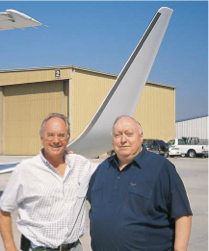
These days a good used Hawker 800 is running $6–$7 million. When you’ve got a popular airframe with such great residual value, I believe it’s definitely worth investing in sensible upgrades. While you’re not likely to pay back cost of the blended winglet modification on fuel savings alone, I’m sure you’ll get all of it back on resale. We certainly see this in the used Gulfstream II market. GIISPs sell faster and at a higher price than stock GIIs. In addition the extra 180 nm range that blended winglet technology brings will save a Hawker 800 operator at least a few intermittent fuel stops a year, which saves time and money.
